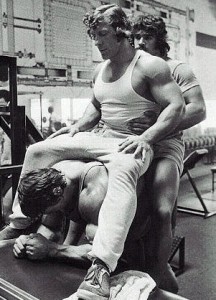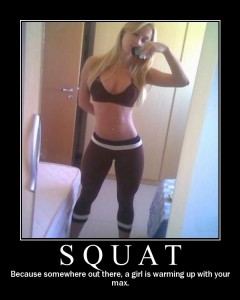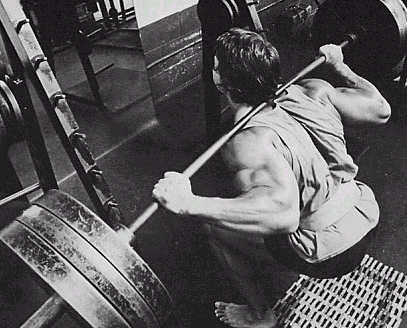The donkey calf raise has been a favorite of bodybuilders for training the lower legs. I think I first learned about this one while reading Arnold Schwarzenegger’s Encyclopedia to Modern Bodybuilding. He described starting with a couple of training partners on his back, then doing reps until failure. One of his partners would then step off so he could continue doing reps with a less weight (just one bodybuilder as resistance)

I used to do this one the old-school way as well. A buddy at one of the first places I trained (a college gym) was about 6’3” and weighed over 270 lb. The gym had a half wall that was perfect to lean on and we had a wooden block that was the right height for placing your feet/toes. A good set of donkey calf raises with my large friend as weight made for an intense workout.
Despite the novel appeal of training this way, I don’t think using a partner’s body weight is the best way. The main problem is in the leverage: a second lifter’s weight is not directly lined up over the muscles you want to train. You’d probably do just as well to use a leg press, where you can load up as much weight as needed and still get the same stretch. Another option would be to use a machine specifically designed for this exercise (I’ve used one before). Using equipment may also avoid some awkward stares from other gym members wondering what you are doing.
Remember a couple of things with this or any other calf exercise:
1. Always pause at the bottom. If you bounce your Achilles tendon will absorb a significant part of the weight and keep you from getting the maximum stimulus.
2. Calves require lots of volume and you will probably be surprised by the amount of weight they can handle. You may want to hit them with lower reps one workout (5-8), then higher reps the next time around (15-30).

